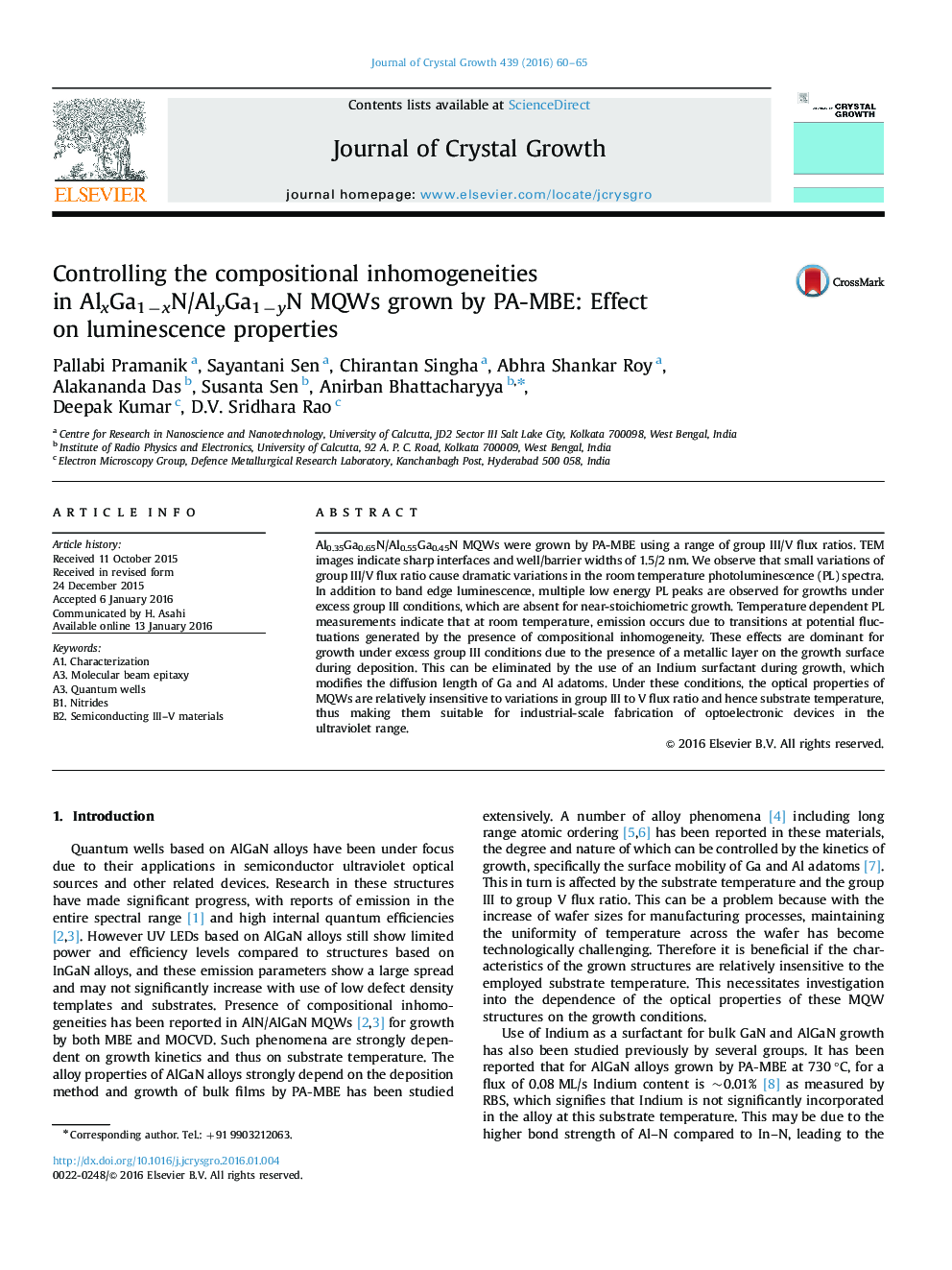| Article ID | Journal | Published Year | Pages | File Type |
|---|---|---|---|---|
| 1789710 | Journal of Crystal Growth | 2016 | 6 Pages |
•Al0.35Ga0.65N/Al0.55Ga0.45N (1.5 nm/2 nm) MQWs were grown by PA-MBE.•Group III to V flux ratio was varied from 1 to 1.12.•III/V≫1 generates multiple low energy PL peaks: strong compositional fluctuations.•This effect eliminated by use of Indium as surfactant, single peak emission produced.•Low amplitude potential fluctuations mostly unaffected by Indium flux.
Al0.35Ga0.65N/Al0.55Ga0.45N MQWs were grown by PA-MBE using a range of group III/V flux ratios. TEM images indicate sharp interfaces and well/barrier widths of 1.5/2 nm. We observe that small variations of group III/V flux ratio cause dramatic variations in the room temperature photoluminescence (PL) spectra. In addition to band edge luminescence, multiple low energy PL peaks are observed for growths under excess group III conditions, which are absent for near-stoichiometric growth. Temperature dependent PL measurements indicate that at room temperature, emission occurs due to transitions at potential fluctuations generated by the presence of compositional inhomogeneity. These effects are dominant for growth under excess group III conditions due to the presence of a metallic layer on the growth surface during deposition. This can be eliminated by the use of an Indium surfactant during growth, which modifies the diffusion length of Ga and Al adatoms. Under these conditions, the optical properties of MQWs are relatively insensitive to variations in group III to V flux ratio and hence substrate temperature, thus making them suitable for industrial-scale fabrication of optoelectronic devices in the ultraviolet range.
